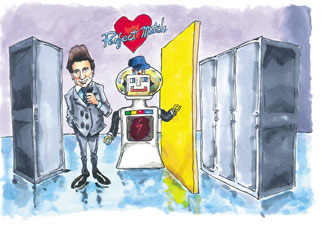The right solution for the right application

Almost every business or industry will have a cabling solution of choice for their networks.
The history and evolution of Ethernet has often been discussed in this publication, but it is only in the past couple of decades that an Ethernet solution for a business or industry sector has been recommended.
ADVERTISEMENT
Several factors have influenced this trend.
Connectivity products have become readily available, commoditised and more affordable. With the cost of solutions coming within reach, the customer base has widened to include small businesses, shops and fast-food outlets. Affordability has also brought opportunities in the residential market.
For industry sectors, a network cabling solution offers flexibility in the provision of services and the adoption of new technology, and hardware manufacturers have developed products capable of interfacing on structured cabling.
This poses the question for consultants: what type of structured cabling best suits the customer’s requirements?
When a building is being added to an established site, projects have often been specified based on existing installations. The benefits are uniformity across a campus and warranty from one manufacturer.
But the question will remain if the original documentation has under-specified or over-specified the customer’s requirements. There is always a balance to be achieved between having the latest and greatest at a premium and achieving the correct mix for the right price to accommodate present-day requirements and take into account future technology.
So how do we choose the right solution for the right application? For this exercise I will touch on three industry areas that vary in their requirements and analyse how they have come up with the best options.
Manufacturing
In heavy industrial manufacturing the ability to monitor, operate or set up machinery via Ethernet has become the standard.
A robust and reliable cabling solution is a must, and it would be best practice to ensure immunity from noise emanating from machinery operating at certain frequencies. The amount of data transfer required for the machinery would also need to be considered.
There are obviously different degrees of manufacturing that would sway the decision, but the core factors remain: robustness, reliability, noise immunity and data transfer capability.
It all points to a shielded solution for the manufacturing environment. The data transfer requirements may not be so great, so Category 6 cabling would be suitable and would provide a buffer if technological development leads to an increase in data transfer.
When all factors have been considered, a cost-effective solution can be developed.
Defence
The defence sector has a strong focus on information delivery in the administrative area.
How this is achieved is of the utmost importance, as sensitive information is transmitted over the infrastructure. Reliability is again a crucial factor, but security is equally important.
The defence sector has long been at the forefront of deploying secure solutions, and the cost factor can play a secondary role in the choice and implementation of a system. With this in mind it has combined solutions to match specific requirements based on the classification of information intovarious security levels.
The defence sector has led the way in installing fibre to the desk – a solution well suited to transmitting highly sensitive data. Any tampering with fibre for illegitimate purposes, without detection, is highly unlikely, and the ability to transfer big data packets is vital.
Employing unshielded-pair cabling for other networks with a lower security classification offers the best of both worlds.
Health
The health area requires the transmission of critical information, usually involving large data packets, so the latest technology must be considered.
And because it would be extremely difficult to roll out a new cabling solution in the future without major disruption, the desire is always to have infrastructure that will support up-and-coming active equipment.
The electrical noise environment will also come into play, as laboratory and analytical machines can have an effect on data transfer.
The health area also highlights the use of structured cabling for other services, such as the nurse call system, access control system, IP security system, building monitoring system, etc.
This has put a big responsibility on vendors to offer solutions that can meet present-day and future requirements in health care and facilitate future needs for other industry areas.
Conclusion
If you asked IT Infrastructure managers what type of solution they would like installed, the ideal would almost certainly be ‘the latest and greatest’, which would also allow vendors to sell their top technology and establish a grounding for future sites.
However, there will always be cost constraints, therefore aspects of the budget and the solution need to be combined – environment, application, security, longevity and cost.
-
ADVERTISEMENT
-
ADVERTISEMENT

